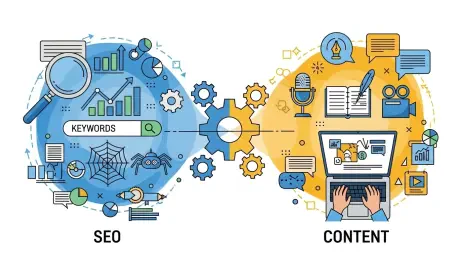Imagine launching a blog post today that continues to drive traffic, generate leads, and build brand authority years from now, without needing constant reinvention. This is the power of evergreen content—a strategic asset in the digital marketing landscape that withstands the test of time. In an era where search engine algorithms evolve rapidly and user attention is fleeting, crafting content that remains relevant is not just an advantage; it’s a necessity for sustained online visibility.
This comprehensive FAQ guide aims to demystify the concept of evergreen content and its pivotal role in SEO success. By addressing fundamental questions, the goal is to equip content creators and marketers with actionable insights to identify, create, and maintain such material. Readers can expect to explore the definition, benefits, and practical strategies surrounding this topic, ensuring a clear path toward enhancing their digital presence.
The scope of this discussion covers critical aspects, from understanding what constitutes evergreen content to implementing techniques for long-term performance. Each section tackles specific queries with detailed explanations and real-world examples, providing a roadmap for leveraging this approach effectively. Dive in to uncover how this timeless content strategy can transform a marketing plan into a lasting source of value.
Key Questions About Evergreen Content
What Is Evergreen Content and Why Does It Matter?
Evergreen content refers to digital material that stays relevant and valuable to audiences long after its initial publication. Unlike trending topics or news-driven pieces that lose traction quickly, this type of content addresses timeless subjects—think how-to guides, industry glossaries, or product reviews. Its enduring nature ensures consistent user engagement, making it a cornerstone for any sustainable online strategy.
The significance of this content lies in its ability to attract organic traffic over extended periods. For instance, a detailed guide on “how to choose the right dog harness” published by a pet care brand remains useful to pet owners indefinitely, driving steady visits without the need for frequent updates. This longevity translates into a cost-effective way to maintain visibility on search engine result pages, establishing a foundation for long-term growth.
Moreover, its importance extends beyond mere traffic. It reinforces brand credibility by positioning a business as an authority on core topics within its niche. When search engines like Google prioritize helpful, user-focused material through systems like the Helpful Content Update, evergreen pieces that deliver lasting value often secure higher rankings, amplifying their impact on a brand’s digital footprint.
How Does Evergreen Content Differ from Trending Content?
A clear distinction exists between evergreen and trending content, primarily in their shelf life and purpose. Evergreen material focuses on subjects with enduring relevance, such as tutorials or best practices, which users seek out repeatedly. A classic example is a comprehensive guide on managing household pests, which remains pertinent regardless of seasonal shifts or current events.
In contrast, trending content capitalizes on momentary buzz, like news articles or viral social media memes, which spike in interest briefly before fading. Consider a blog post about a celebrity scandal or a fleeting TikTok challenge; while it may garner immediate attention, its appeal diminishes as public interest shifts to the next big thing. Such content often requires constant creation to maintain engagement, unlike its timeless counterpart.
This difference impacts SEO strategies significantly. While trending pieces can provide short-term boosts, they rarely contribute to sustained authority or backlinks. Evergreen content, however, builds a compounding effect, continuously attracting links and user interactions, which search engines interpret as signals of quality, thus prioritizing it in rankings over ephemeral posts.
Why Is Evergreen Content Essential for SEO and Brand Strategy?
Evergreen content serves as a vital component of modern SEO by ensuring sustainable organic traffic. Its focus on timeless topics means that a single well-crafted piece, such as a tutorial on basic car maintenance, can draw consistent visitors for years, reducing the need for frequent content churn. This durability aligns perfectly with search engine goals of rewarding material that meets ongoing user needs.
Beyond traffic, it fosters brand authority by showcasing expertise in a specific domain. For a tech company, a series of in-depth articles on software troubleshooting not only educates users but also builds trust, associating the brand with reliable solutions. This topical authority signals to search engines that the site is a go-to resource, often resulting in improved rankings and visibility.
Additionally, the strategy supports cost efficiency in customer acquisition. A pet store’s blog on “best foods for allergic dogs” can convert readers into buyers long after publication, lowering the overall cost per lead compared to short-lived ad campaigns. This long-term conversion potential, paired with opportunities for internal linking and repurposing, makes it indispensable for a robust brand strategy.
How Can Evergreen Content Opportunities Be Identified?
Identifying opportunities for evergreen content starts with thorough keyword research to pinpoint topics with consistent search interest. Tools like Semrush or Google’s Keyword Planner help uncover terms with steady volume, such as “how to care for indoor plants,” which remain relevant year-round. Focusing on brand-aligned subjects ensures the content resonates with the target audience while supporting business goals.
Understanding search intent is equally crucial in this process. Queries with informational intent, like “what is cloud computing,” lend themselves to comprehensive guides or FAQs that attract users at the top of the funnel. Conversely, commercial or transactional searches, such as “best cloud storage for small businesses,” offer opportunities for reviews or comparison content deeper in the funnel, guiding users toward conversion.
Analyzing historical site performance and competitor strategies adds another layer of insight. Reviewing data from Google Search Console can reveal which types of guides or tutorials have previously driven traffic, while tools like Ahrefs expose competitors’ high-performing evergreen pieces. Combining these findings with internal data, such as customer support FAQs, helps zero in on gaps that align with both user demand and business objectives.
What Are the Steps to Create High-Quality Evergreen Content?
Creating impactful evergreen content begins with adopting a mindset focused on longevity and relevance. Before drafting, evaluate whether a topic will remain pertinent over the next 12 to 24 months and if it reflects the brand’s expertise. Choosing fundamental subjects, like a beginner’s guide to personal finance, ensures a broad, enduring appeal that anchors other content through internal links.
Deep, original research forms the backbone of compelling material. Gathering data, expert quotes, and actionable insights makes a piece “bookmark-worthy,” encouraging shares and backlinks. For example, a health blog might include statistics from reputable studies on nutrition trends, enhancing credibility and providing value that users return to repeatedly, while also satisfying search engine criteria for quality.
Optimizing for discoverability and engagement completes the creation process. Use timeless URLs without dates, incorporate structured headings for readability, and add visual elements like infographics to improve user experience. Embedding conversion paths, such as links to related products or newsletter signups, ensures the content not only informs but also drives measurable outcomes, solidifying its role in a marketing strategy.
How Should Evergreen Content Be Maintained for Long-Term Success?
Maintaining evergreen content requires regular updates to keep it relevant and effective. Scheduling refreshes every six to 12 months allows for the replacement of outdated statistics, broken links, or stale examples, ensuring the material remains accurate. A pet care guide on flea prevention, for instance, might need updated product recommendations to reflect current market offerings.
Transparency with users and search engines enhances trust during updates. Adding a “last updated” date or a revision history signals that the content is current, reassuring readers of its reliability. This practice also demonstrates to algorithms that the page is actively managed, potentially boosting its ranking against less-maintained competitors.
Leveraging automation tools simplifies ongoing monitoring and optimization. Platforms like Semrush or Google Search Console can track rankings and performance metrics, alerting to declines or opportunities for improvement. Using modular content blocks for reusable sections, such as FAQs, streamlines updates, making it easier to scale maintenance across multiple assets without extensive rewrites.
Summary of Evergreen Content Insights
This guide has unpacked the essence of evergreen content, highlighting its definition as timeless, valuable material that sustains user interest over years. Key benefits for SEO and brand strategy, including consistent traffic, authority building, and cost efficiency, underscore its importance in digital marketing. The discussion also clarified distinctions from trending content, emphasizing the former’s role in long-term visibility.
Practical strategies for identifying opportunities through keyword research, search intent analysis, and competitor benchmarking provide a clear framework for content planning. Steps for creation, from original research to optimization, ensure high-quality outputs, while maintenance tips like regular updates and performance tracking guarantee sustained relevance. These insights collectively offer a blueprint for integrating this approach into broader marketing efforts.
For those seeking deeper exploration, consider resources on advanced SEO techniques or content repurposing strategies available through industry-leading platforms. Engaging with communities or forums focused on digital marketing can also provide fresh perspectives and real-world case studies to further refine skills in crafting and managing enduring content.
Final Thoughts on Leveraging Evergreen Content
Reflecting on the journey through this topic, it becomes evident that evergreen content stands as a powerful tool for achieving lasting digital impact. The process of identifying, creating, and maintaining such material demands strategic planning and consistent effort, yet yields significant rewards in traffic and brand trust. Each step taken in this direction builds a stronger foundation for online success.
Looking ahead, the next actionable step involves auditing existing content to pinpoint potential evergreen pieces for optimization or refresh. Experimenting with repurposing high-performing guides into different formats, like videos or downloadable checklists, can expand reach across channels. Staying attuned to evolving user needs and search engine updates will ensure that these assets continue to thrive in a dynamic digital landscape.









